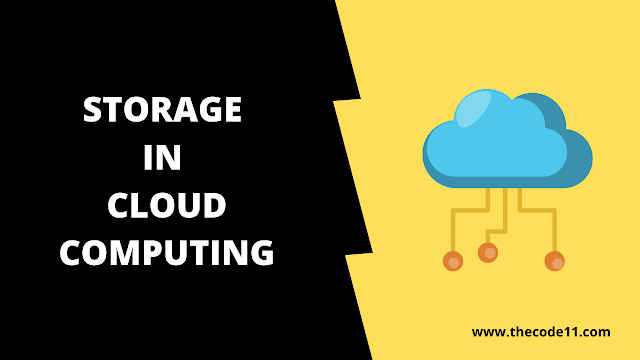In this tutorial you are going to learn about Storage in Cloud Computing.
Introduction to Cloud Storage
Cloud storage is a service model in which data are transmitted and stored on remote storage system where it is maintained and managed, backed up and made available to the users over the web or internet.
Cloud storage is based on virtualized infrastructure with an accessible interface. With the help of RESTful API users can retrieve and access data from the storage.
Storage Devices
Storage Devices are divided into two categories:
- Block Storage Device
- File Storage Device
Block Storage Device
The block storage devices offer the raw storage facilities to the clients. These raw storage are partitioned to create volumes. Storage breaks up the data into blocks and then stores blocks with a unique identifier.
- Data is stored in equal sized blocks
- Works well with I/O intensive applications or databases or with virtual volumes
- Usually accessed as mounted drive
- No metadata and limited searched capabilities
- Releases load from compute and spreads it across
File Storage Device
The file storage device offers storage to clients. It maintains its file systems all by itself. The file storage devices are in the form of Network Attached Storage (NAS). Data is stored in hierarchical structures.
- Files are stored in one location and as one entity and are not broken in blocks.
- Files documents are shared as per authorization and authentication.
- Accesses via mount points.
- Uses limited metadata with attributes like time, size and when file was accessed and created etc.
Companies offering cloud object storage:
- IBM
- AWS
- AZURE BLOB STORAGE
- ORACLE STORAGE
- GOOGLE CLOUD STORAGE
- ALIBABA OSS
Google File System
A Google file system in the cloud is a hierarchical storage system that provides shared access to files. Using Google file system we are able to create, modify, store the data.
Google File system is a scalable distributed system and it is developed to accommodate Google’s expanding data processing requirements.
Google File Architecture: Google File System is organised into clusters of computers. Each cluster might contain hundreds or even thousands of machines.
- In the world of GFS, the term “client” refers to an entity that makes a file request.
- Creating, modifying and manipulating existing files to create new files on the system can be done.
- Clients can also be any computer applications.
- The master duty includes maintaining an operation log, which keeps track of the activities of the master’s cluster.
- The master server also keeps the track of metadata, which is the information that describes chunks.
- The GFS copies every chunk multiple times and stores it to different chunk servers, each copy is called a replica.
Advantages of Cloud Storage:
- Pay for what you use
- Unlikely billing
- Globally available
- Ease of use
- High security and accessibility
- Recovery and maintenance
Disadvantages of Cloud Storage:
- Back-up may be slower
- Higher internet Utilization
This article on Storage in Cloud Computing is contributed by Hemalatha P. If you like TheCode11 and would like to contribute, you can also write your article to us. Here is our mail id - thecode11info@gmail.com

